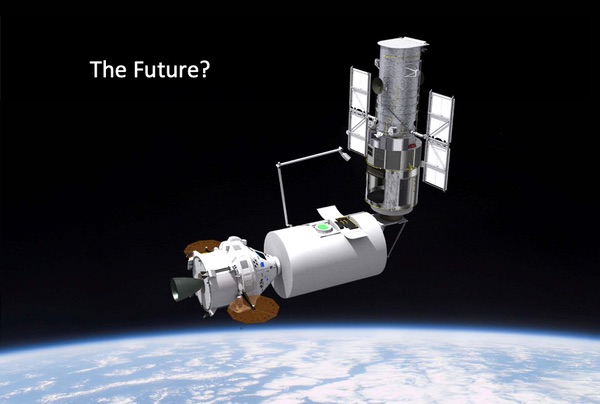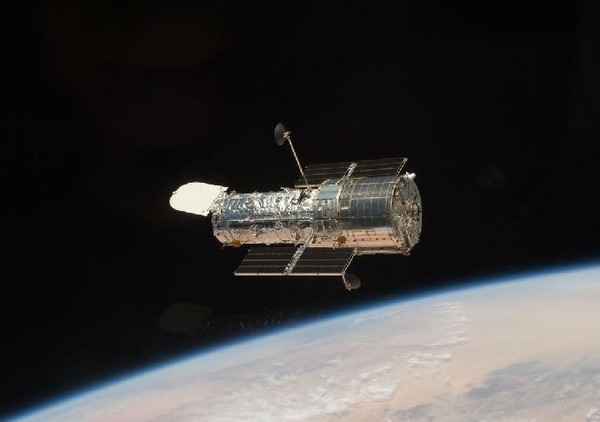Hugging Hubble longerby Jeff Foust
|
| “We will not launch in March, absolutely will not launch in March,” Zurbuchen said of JWST. “That is not in the cards right now.” |
Last week, Thomas Zurbuchen, NASA associate administrator, confirmed the inevitable: the James Webb Space Telescope (JWST) won’t launch next March, as had been the schedule for the last two years. This time, a slowdown in work on the telescope that started this past March because of the pandemic will delay a launch, something that appeared increasingly obvious given the limited work that could be done and the available schedule reserves.
“We will not launch in March, absolutely will not launch in March,” he told a meeting of the National Academies’ Space Studies Board last week. “That is not in the cards right now. It’s not because they did anything wrong. It’s just not going to be in the cards. It’s not the fault or some kind of mismanagement of some type.”
Work on JWST, which had dropped from 12 shifts a week to five, is ramping back up, and some NASA personnel who returned home in March because of the pandemic are returning to oversee that work. In a press release a day before Zurbuchen’s presentation to the committee, NASA announced a successful test of an element of JWST called the Deployable Tower Assembly, and noted that NASA and prime contractor Northrop Grumman had “recently resumed near-full operations.”
Zurbuchen did not give a new estimate for when JWST would launch. NASA will conduct a schedule assessment next month, he said, and emphasized that the work on JWST had been going well in the months before the pandemic. “I’m very optimistic of this thing getting off the launch pad in ’21,” he said.
The next large astrophysics mission after JWST has its own issues. The Wide Field Infrared Survey Telescope (WFIRST), formally renamed the Nancy Grace Roman Space Telescope last month, has also suffered slowdowns because of the pandemic. Moreover, the NASA budget proposal for fiscal year 2021 requested no money for the mission for the third consecutive year.
Fortunately, things are going better with the telescope both JWST and Roman are slated to replace. The Hubble Space Telescope is now 30 years old, and after a 1993 servicing mission corrected its faulty optics, has been one of the most productive observatories of all time.
The anniversary of its launch in April was overshadowed by the pandemic, and many of the events planned to mark it either were postponed or held online in some way. That included a panel discussion about Hubble’s 30th anniversary that took place during a joint online meeting of the Space Studies Board and the Aeronautics and Space Engineering Board the day before Zurbuchen’s presentation last week.
During that panel, several astronomers talked about the role Hubble has played in advancing their specific fields, from studies of solar system objects to evidence for dark energy that won astronomers a Nobel Prize in Physics. All that was accomplished, they noted, with a relatively small telescope: with a primary mirror 2.4 meters in diameter, it is much smaller than many existing groundbased telescopes, let alone still larger ones in development.
“To me it doesn’t look like a small telescope,” said former astronaut John Grunsfeld during the panel session. He flew on three of the five servicing missions to Hubble, and showed an image of him working on the telescope during one of the many spacewalks he performed to repair and upgrade the telescope.
The last of those servicing missions, Servicing Mission 4 (there was a 3A and a 3B), was 11 years ago, in May 2009. While there have been some issues with Hubble’s gyros—three of the six installed on that final servicing mission have failed—the rest of Hubble is working well, giving astronomers confidence that the space telescope could operate for several more years.
| “I wouldn’t preclude the possibility, because we have the capability coming online in the next ten years, that you could send a repair mission up to Hubble,” said Grunsfeld. |
Grunsfeld cited reliability studies that found a high probability that Hubble’s major subsystems, and its instruments, can operate through at least the mid-2020s. “I do believe that Hubble can continue to operate for a few more years, and we hope that it has a lot of overlap with the James Webb Space Telescope,” he said.
Eventually, though, the remaining gyros, or some other major subsystem, will fail, making it impossible for Hubble to operate. That would mean the end of the mission—unless the space telescope was repaired again.
Grunsfeld, both in last week’s panel and a presentation last month at an online meeting of the Space Transportation Association (STA), sought to build up interest in a new kind of servicing mission. “We could use an Orion spacecraft,” he said last week, “and go up and service Hubble again. It’s certainly capable of doing that.”
Orion alone would not be sufficient. He showed an illustration of an Orion spacecraft attached to a module with a robotic arm and an airlock that, in turn, is attached to the base of Hubble. That module makes use of a docking adapter, called a Soft Capture Mechanism, attached to Hubble on the last servicing mission so a future robotic spacecraft could dock with it to either deorbit it or move it to a higher orbit.
“I wouldn’t preclude the possibility, because we have the capability coming online in the next ten years, that you could send a repair mission up to Hubble,” he said at the STA meeting, one that could use SpaceX’s Crew Dragon spacecraft in place of Orion. “We have the technology to go back to Hubble.”
 An illustration from a presentation John Grunsfeld gave to the National Academies that showed how an Orion spacecraft and equipment module could be used to service Hubble. |
Such a mission, he said, could not only replace Hubble’s failing gyros but also install new scientific instruments. “We could keep Hubble going for another few decades,” he said.
An alternative would be some kind of robotic servicing mission to Hubble. NASA studied that 15 years ago, after NASA administrator Sean O’Keefe cancelled Servicing Mission 4 in the aftermath of the Columbia accident. At the time, though, robotic servicing technologies were not sufficiently advanced, and O’Keefe’s successor, Mike Griffin, ultimately restored the shuttle servicing mission.
That technology has advanced, though, thanks to work at NASA, DARPA, and the private sector. Could a robotic servicing mission be feasible now? “Doing a basic servicing mission, there are some things we could do,” he said at the STA meeting. That includes replacing Hubble’s Wide Field Camera 3 with a next-generation instrument, and either replacing the gyros or installing a new rate-sensing package to take over for the gyros.
“But the kinds of things that we’ve done with the power system, replacing the power control unit, or rewiring the telescope for various power issues, pulling boards and that kind of stuff, is well beyond what we could do robotically in space,” he said. That level of complexity, he concluded, would require people.
One aspect of such a mission he didn’t talk about was the cost. An Orion mission alone might cost more than $1 billion, including the spacecraft and its Space Launch System rocket. A Crew Dragon or Starliner mission could cost a small fraction of this, but there are still the costs of that equipment module, including robotic arm and other servicing equipment, not to mention any new instruments, which not only have a significant cost but can take years to develop.
At last week’s National Academies meeting, astronomers seemed open to the idea of servicing Hubble again. The SpaceX Crew Dragon launch last month “prompted me to start thinking about this again for Hubble,” said Garth Illingworth of the University of California Santa Cruz.
“It’s still a great mirror, great optics,” said Adam Riess of Johns Hopkins University, one of the winners of that Nobel Prize using Hubble observations. “It has a lot of life left.”
| “It’s not currently on the books. Nobody is really talking about it a lot, at least publicly,” Grunsfeld said. “But you never know. We certainly could do that.” |
“It would make for a very interesting National Academies’ Space Studies Board study to look into whether Hubble could be, should be serviced,” Grunsfeld suggested, an idea that one member of the Aeronautics and Space Engineering Board, John Karas, said he supported.
How such a study would work, and how it would fit into NASA’s long-term plans, remain unclear. Notably, an extension of Hubble’s life through a servicing mission has not come up in public discussions for the ongoing astrophysics decadal survey, which sets priorities for both ground- and space-based astronomy. That report, called Astro2020, is now expected next spring.
NASA’s astrophysics budget is also strained. While the agency requested an overall 12% budget increase in its fiscal year 2021 proposal, it sought to cancel both the Roman Space Telescope as well as the SOFIA airborne observatory. While Congress will likely reject both cuts, restoring nearly $600 million to NASA’s astrophysics program won’t make it any easier to find even more money for a new Hubble servicing mission.
Grunsfeld acknowledged at the STA meeting that the idea of a new servicing mission is not widely accepted. “It’s not currently on the books. Nobody is really talking about it a lot, at least publicly,” he said. “But you never know. We certainly could do that.”
Riess, at the National Academies meeting, recalled some advice from Riccardo Giacconi, an early pioneer in space-based astronomy. “He realized that, at some point, it’s so hard to get these telescopes up there that, once you get one, you really got to hold on it and get everything you can out of it,” he said. “Us ‘Hubble Huggers’ certainly feel that way about Hubble.”
Note: we are temporarily moderating all comments submitted to deal with a surge in spam.
